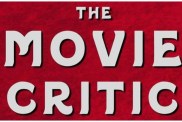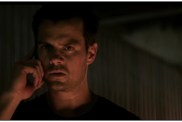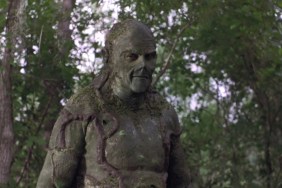
SHOCK flashes back to one of the most powerful werewolf tales ever penned.
I once collected comic books. I had many. It was a passion. But I was selective. I was drawn to the dark side, always. I was drawn to outsiders. To monsters. To protagonists choked with anxiety and who struggled to maintain their basest natures or, as was often the case, managed to exploit their darkness and somehow, someway use it to do good things. I saw people like this around me, in my family, in the world, on the news. In myself. I was interested in redemption and the reality of flawed people struggling with desire and addiction and hard-wired impulses. I was interested in reality perverted and poisoned with fantasy.
Among my obsessions were (mostly Marvel) anti-heroes like GHOST RIDER, MAN-THING, the complexities of the Dracula character in the TOMB OF DRACULA books (and the side-car character of Blade); I liked THE INCREDIBLE HULK lots and I adored SPIDERMAN, the ultimate broken, tormented young person forced to grow up fast and face the world, the weight of which sat heavy on his narrow shoulders as he tried to live by an increasingly stressful-to-maintain code, isolating himself from the world in order to keep people safe.
But in 1985, when I was 10 years old, I picked up a book at the local convenience store that affected me deeply.
And it still does to this day.
That comic cost ninety-five cents and it was the first – and perhaps only – SWAMP THING issue I ever bought. Certainly it’s the only one I remember. And when I turned into a teenager, hungry for a freedom I couldn’t afford, I sadly, stupidly sold most of those treasured comics, save for a handful.
Among those salvaged was Alan Moore’s astonishing, haunting and profound SWAMP THING #40, a story called “The Curse”. I still have it. I think about often. I just made a movie that was inspired by it. And I have seen traces of its DNA in other horror films over the past 30 years. One of those movies takes credit for “inventing” the motif that Moore so elegantly employed with so much poetry and grace.
And though I’ve read plenty of comic books, graphic novels and seen their many cinematic incarnations, nothing – for me – quite matches the impact of “The Curse”.
The story begins with typically evocative Stephen Bissette and John Totleben artwork (the story was in fact based on an idea submitted by the pair, stemming from a rejected HEAVY METAL pitch), bringing to life the plight of Moore’s female protagonist/antagonist/victim/hero, referred to only as “She”. This somewhat harried woman pushes a grocery cart through a garish supermarket while the speakers drip out a muzak version of “Moon River” and the woman “wonders why women’s lives should be punctuated with blood”…
In her cart, among her intended purchases sits a large box of “Feminex” sanitary napkins, showing a maiden skipping through a field, a sharp contrast to “She” as she gets lost in her own dark thoughts about the Pennamaquot Indians, who, when their women were menstruating, imprisoned them in stilt-raised huts, in the dark, feeding them on sticks while the now barren matriarchs of the tribe sat in judgement of their female “filth”.
As the woman checks out, her pads being placed in a separate brown paper bag so as not to “sully” her foodstuffs, she begins to imagine the anger of the Pennamaquot squaws, and that anger begins to take shape, as three punctures of blood erupting from the dark.
All of this takes up a mere 6 panels on the main page.

As the tale continues, the woman, who we learn is named Phoebe, walks home, past tampon-shucking billboards and douche ads, past XXX movie houses that market the female form as mere jizz-buckets. And those blood punctures swell and Phoebe begins to crawl deeper into herself, into her rage.
Meanwhile, the reason why readers came to this party is introduced, Len Wein and Bernie Wrightston’s Swamp Thing, who kisses his lady love Abby against a full moon in the majestic beauty of the bog at night. In a world choked by stereotype, here we see a pure love, visually imperfect and impossible but potent and real. We meet a strong woman who is not controlled by this love, but welcomes it and a “man” who stands by her, cares for her, compliments her.
Says Abby:
“You don’t ask me to feed you, or tidy the swamp, or iron shirts and I get fresh flowers all year round…”
Both of these individuals are just that, individuals. They have their own lives and they come together out of love, real love, not expectation. Moore’s vision of Swamp Thing and Abby is truly one of comicdom’s most endearing and inspiring “human” relationships.

But then, we slam back to suburbia, to see Phoebe hosting a dinner party for her braying husband and bourgeoisie friends, their callous comments about femininity, their mocking contempt for the native lodge that once stood on the property where their cookie-cutter home now stands, grinding Pheobe’s already culturally and now supernaturally affected state into a bloody paste.
And those dashes of red are forming eyes, a toothy mouth.
Something is gestating. Something wants release. Something is about to break.
Swamp Thing – who is really just a supporting character here, a witness – senses this, senses “a dark energy, like my own…” and begins the trek to investigate the forces that will soon both liberate and decimate Pheobe.
Suddenly, the rage of centuries, of femininity crushed by whatever insidious coiled terror and need for control taints masculinity, erupts from this woman, her drooling mouth opening and a fanged maw vomiting forth. A monstrous she-wolf emerges, red-eyed and muscled, ready to tear her quivering mate apart, a man who only moments before demanded his wife prepare dinner.
Now, it’s he who just might prepare her dinner, with minimum effort and maximum poetic justice.

And as the Pheobe-creature rampages into the night, blindly tearing down the tokens of her oppression, Swamp Thing finds her and tries to help. The tragedy of the tale is that it might be too late for her…for all of us.
Yes, “The Curse” is ostensibly a werewolf story and one of the most powerful ever penned, realized with fury and beauty and packing a hard punch to the gut and mind. The previous year, we had seen Neil Jordan’s Angela Carter-written, similarly feminist werewolf fantasy THE COMPANY OF WOLVES and here, Bissette seemingly borrows that transformation (seen famously on that film’s poster) for Pheobe’s transformation.
However, as Bissette told me:
“We cooked up that “different” werewolf transformation, and no sooner than I’d penciled it from Alan’s script than I saw the first photos and an ad for THE COMPANY OF WOLVESand FUUUCCCCKKK! There was our “clever different” transformation notion, RIGHT ON THE AD for that film! Ah, fuckadoodle…”
But regardless, it’s so much more potent here, with the metaphor for menstruation and the way society isolates women for what is their very essence, their beauty, the very alchemy of life, giving birth to an unspeakable and vengeful horror. Years later, the Canadian werewolf film GINGER SNAPS would get the credit for linking ovulation to lycanthropy, but make no mistake, Moore got there first, delivering a deadly serious allegory, graphic and frightening and adult and overwhelmingly sad, hiding in the confines of what was sold as a children’s entertainment.
Imagine a 10 year old boy discovering this in 1985, a less enlightened age. The visceral and intellectual impact on my cannot be overstated. It shone a light on the female condition, suddenly made me instantly empathetic and made me acutely aware of the mass-marketing of shame and silliness that women have been slave to for so very, very long. That it took a werewolf and a melancholy swamp mutant to teach me such things says much about the educational system, I think; of how we as people and seekers of truth will find that truth where we find it, as opposed to having it shoved down our throats for societal approval, regurgitating knowledge in exchange for a grade as opposed to truly assimilating and being affected by that knowledge.
I found truth in SWAMP THING #40.
I still do.
I urge you to seek it out…








